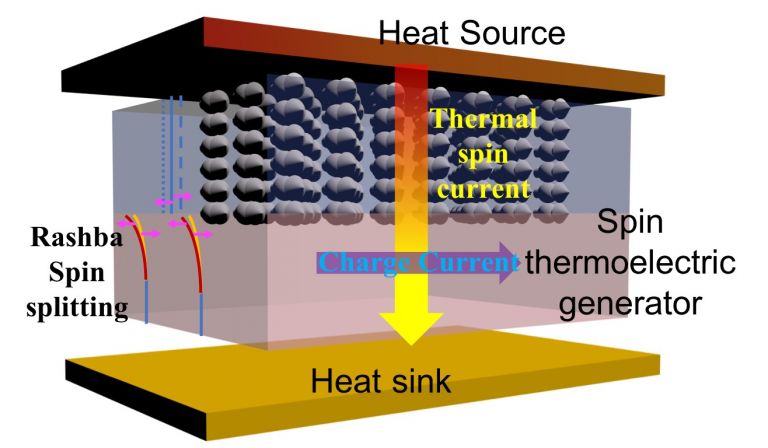A team from University of California, Riverside, has successfully used inexpensive materials to create a thermoelectric generator, which converts low-level waste heat into electricity.
The device was created from a two layer sandwich of nickel-iron Permalloy and p-type silicon. When heat was applied to the Permalloy, an electrical voltage was produced, due to a phenomenon known as the spin-Seebeck effect, whereby temperature gradient generates a spin current from the ferromagenetic substance, and produces a voltage in the silicon.
In a device with a silicon layer fiver nanometers thick, the team measured a voltage of 100.3 microvolts, one of the largest reported for a device of this type, according to results published in the journal, Physica Status Solidi- Rapid Research Letters.
If scaled up and made more efficient, the technology could have a range of commercial applications, including generating electricity from waste heat created in computer chips, household appliances and solar panels.
“Photovoltaic solar panels become quite warm, so integrating thermoelectric generators into such panels could generate additional electricity from that waste heat,” explains UCR Assistant Professor of Mechanical Engineering Sandeep Kumar.
“Thermoelectric generators could also be integrated into automobiles, where engine temperatures can reach a hundred degrees centigrade, compared to an ambient temperature of twenty-five degrees. In such an application the generated electricity could power the car’s electronics and even provide cooling.”
This content is protected by copyright and may not be reused. If you want to cooperate with us and would like to reuse some of our content, please contact: editors@pv-magazine.com.




1 comment
By submitting this form you agree to pv magazine using your data for the purposes of publishing your comment.
Your personal data will only be disclosed or otherwise transmitted to third parties for the purposes of spam filtering or if this is necessary for technical maintenance of the website. Any other transfer to third parties will not take place unless this is justified on the basis of applicable data protection regulations or if pv magazine is legally obliged to do so.
You may revoke this consent at any time with effect for the future, in which case your personal data will be deleted immediately. Otherwise, your data will be deleted if pv magazine has processed your request or the purpose of data storage is fulfilled.
Further information on data privacy can be found in our Data Protection Policy.